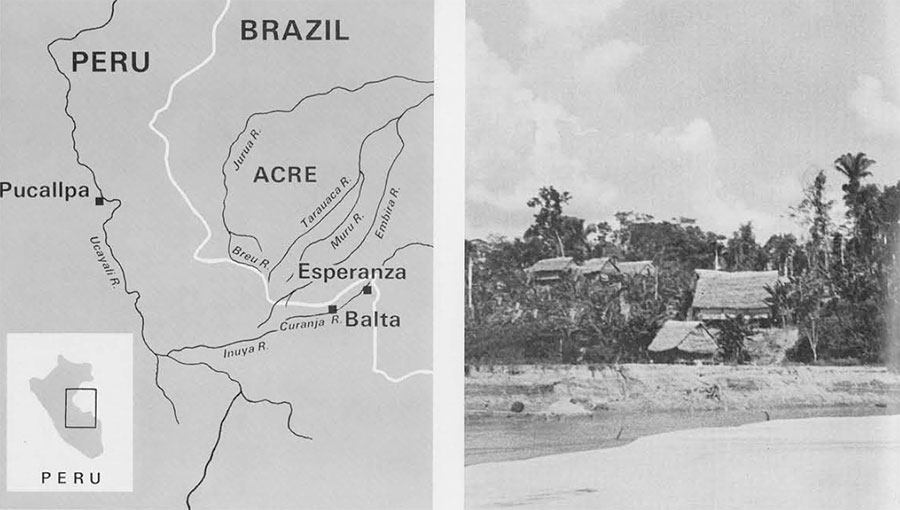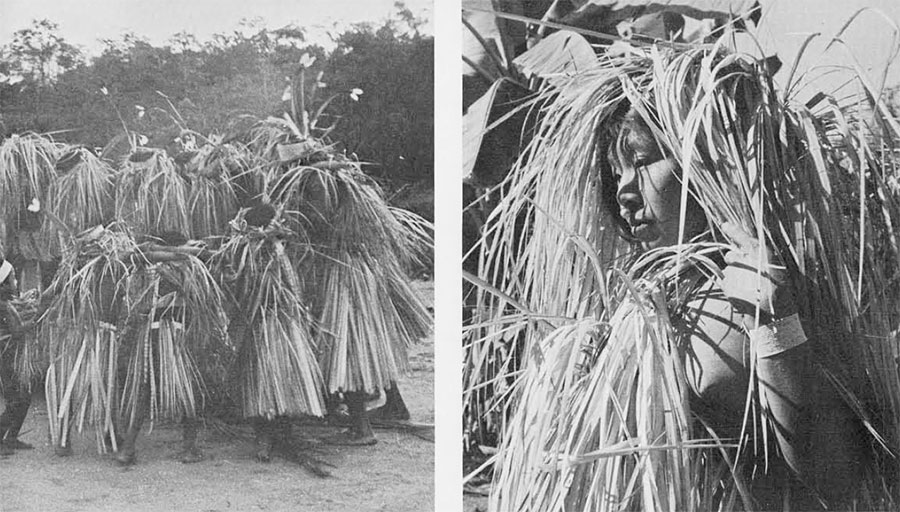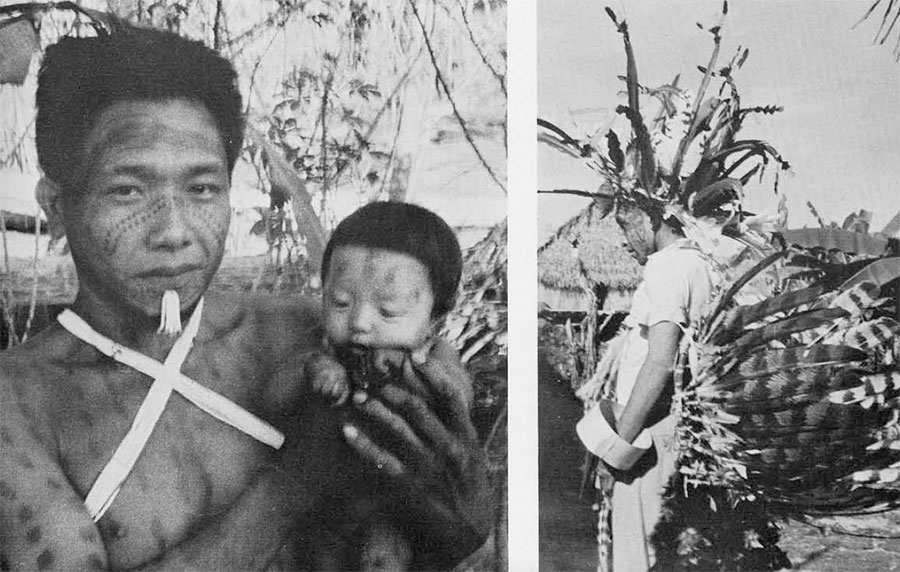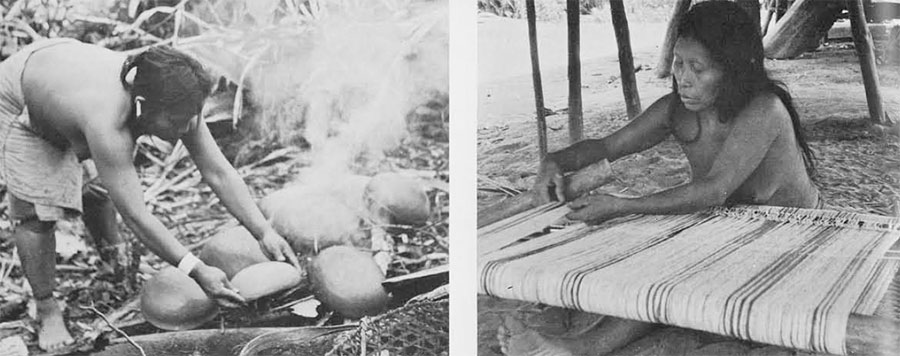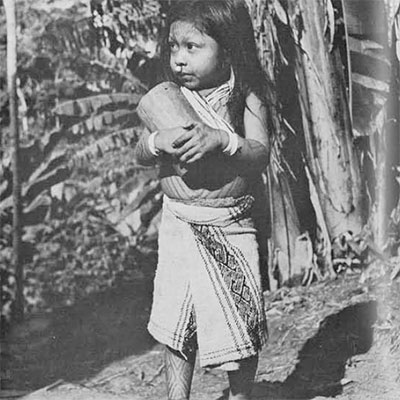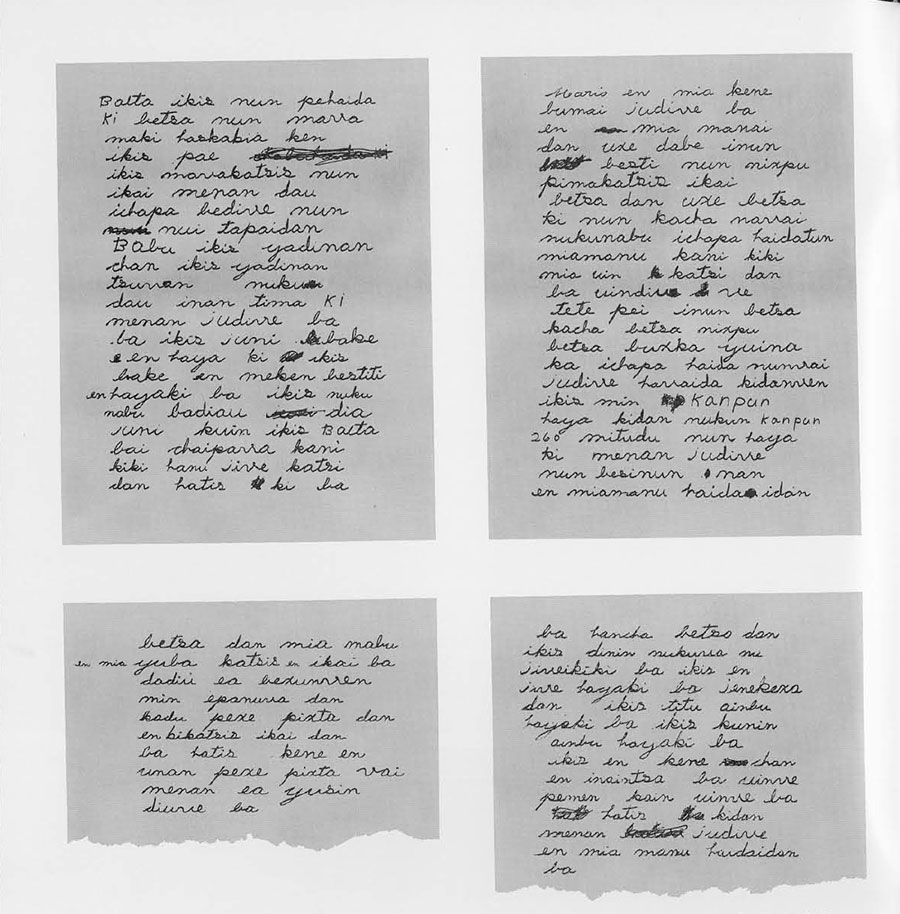
The Cashinahua, classified linguistically as Panoan, live along the Curanja River of southeastern Peru and along upper reaches of the Embira, Muru, Tarauaca, Jordao, Jurua, and Breu Rivers of the state of Amazonas and the Territory of Acre in Brazil.
The Cashinahua depend about equally on hunting and horticulture (sweet manioc, maize, plantains, bananas, peanuts, watermelon, chili peppers, squash, etc.) for subsistence. Fishing and gathering serve to provide variety in the diet, and to supplement the food supply especially when the old gardens have become exhausted and the new gardens have not yet come into full production, or when the men have been unsuccessful at hunting.
The basic economic and property-holding unit is the nuclear or polygynous family; the basic social and political unit is the village, which until recently, consisted of one or two long thatch-roofed houses, each inhabited by two or more matrilocal extended families. Each village is autonomous. Infrequent cooperation and interaction between neighboring villages is generally social and ceremonial in character. Although widely dispersed, the Cashinahua consider themselves to be a single group bound together by a common language–hancha kuin (the Real Words–hancha ‘words,’ kuin ‘real’), buy a common ethnic identity–huni kuin (the Real Men–huni ‘men’), by the ceremonially important patrilineal moieties, and by extension of the kinship terminology to include all members of the tribe.
The Cashinahua of the Curanja River seem to have migrated from the Embira River of Brazil shortly after the turn of the century because of a disagreement over what the tribe’s relationship should be toward the Brazilian rubber workers who were moving into the area. The more conservative, isolationist group moved up the Embira and crossed over to the headwaters of the Curanja where they maintained their isolation until 1945 or 1946, when a group of them descended the Curanja in search of metal axes and machetes. The contact was peaceful and the Cashinahua began to work lumber and wild rubber but soon became disillusioned by the harsh and unfair treatment of the traders.
In 1951 an ethnographer from the Museu Sao Paulo, Brazil, visited several of their villages ( he reported 450-500 persons living in eight villages), taking photographs and collecting artifacts for which he paid them lavishly with trade goods. Shortly after his departure an epidemic swept the villages and decimated the population. Many died; others fled to Brazil. Thus, on my arrival in the tribe in July of 1955, the ninety-one remaining Cashinahua were somewhat less enthusiastic about the idea of my living in the village. However, their desire for trade goods outweighed their fears and I was invited to stay. Their fears melted slowly, due largely to the generous payment in trade goods they received for building my house, my successful medical treatment of the headman, my willingness to participate in their activities, and my humbling, but to them hilarious, attempts at speaking their language.
As a linguistic field worker with the Instituto Linguistico de Verano del Peru, my job was to learn and analyze the Cashinahua language, and then to develop an orthography and prepare literacy materials in it. (The Institute works in conjunction with the Peruvian Ministry of Education, which has as one of its goals the incorporation of all its ethnic groups into the life of the republic through a program of literacy and bilingual education.)
Learning an unwritten language is difficult, even when bilingual informants are available. Unfortunately, there were no Cashinahua bilinguals. In fact, there were no monolingual informants available for desk work. Language learning of necessity became a by-product of active participation in village life.
Mealtimes generally provided my best opportunity to hear the language spoken. The communal meals are always lively social gatherings, the men sitting on turtle shells, carved wooden stools, or just squatting in one large circle about bowls of wild game, vegetables and a thin gruel of ground maize, the women seated nearby. As they eat, they recount the day’s activities–hunting exploits, crops, jokes about their wives and children. From the beginning they expected me to share their conversation and, aided by the man with whom I had worked that day, I would stammer out a report of my day’s activities.
They still tease me about one early blunder. It had rained during the afternoon and since all the turtle shells and stools were occupied when I joined the group for dinner, I wanted a palm leaf mat to sit on so that I would not get wet and muddy. (I later learned that only women sit on palm leaf mats.) I knew that the word for mat was something like pishi–ribs. I asked the headman’s wife for pisi. Chuckling, she got up to fetch it and I squatted down and began to eat. In a moment, she returned with a rotten egg–and broke it on my bare back. As the fumes settled like a fog, the whole group howled with delight. I had asked for pisi, a foul smell. Laughing and spitting, they yelled, ‘Pisi, pisi, pisi. Min pisi haidaki.’ “Stinky, stinky, stinky. You stink a lot.” Since everyone else was now also contaminated by the fumes, we interrupted the meal for a mass bath in the river. I would now ask for pishin. Fortunately, not all language lessons were learned in such a dramatic fashion.
Language learning and analysis proceeded at a slow but steady pace and in the spring of 1961, I prepared some experimental literary materials and began to test them with my informants, one of whom was Mario, the writer of the letter shown on page 4 of which the above is a translation.
I was able to accept the invitation to return to observe the initiation rites, which nine years earlier they had not permitted me to see. In the intervening years, many changes have taken place. Due to a drop in the infant mortality rate and migrations from Brazil, the population has risen to over three hundred. There is a renewed interest in things Cashinahua. Rituals and ceremonies, which had been dying out, have been revived. The ability to read and write their language has become a consuming passion. The old men want all the old lore put into books. They want a school established so their children can learn. Mario, their first letter writer, is now being trained by the Peruvian Government to be a teacher for his own people.
